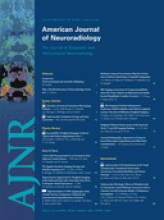We read with great interest the article “High-Resolution Imaging of an Ancient Egyptian Mummified Head: New Insights into the Mummification Process” by R. Gutpa, Y. Markowitz, L. Berman, and P. Chapman.1 Their observations are very interesting, but their conclusions are difficult to correlate with our knowledge of ancient Egyptian rituals and postmortem pathology.
The authors’ analysis of radiologic findings concludes that “the ‘Opening of the Mouth’ ceremony, described in the ancient texts, would be difficult to perform in the presence of rigor mortis.”1 Rigor mortis begins to manifest itself minutes to a few hours after death, is usually complete by 4 to 5 hours, and lasts approximately 72 hours at room temperature. The length of time of rigor mortis is temperature dependent and would be considerably shorter in the expected temperatures of Middle Egypt. The “Opening of the Mouth” ceremony was performed at the time of entombment that occurs 70 days after death. From what we know about the embalming procedure, dehydration and multiple aspects of the wrapping and ceremonial incantations would precede the touching of the mouth by the Sem Priest.
Second, the authors conclude that the rationale for the facial mutilations is “to completely mobilize the mandible.”1 The “Opening of the Mouth” ceremony, described in Chapter 23 of the “Book of the Dead,” was a symbolic procedure. The origins of the ritual are most likely associated with animal sacrifice and the transmission of the energy of the contracting muscle fibers of the animal into the body of the deceased. During this ceremony, the Sem Priest would take a foreleg of a sacrificed bull and touch, or pretend to touch, the mouth. The implements used for the ceremony evolved from the bull's foreleg to adze, but the symbolic nature of the ceremony remained.
For both of those reasons, the conclusions of Gupta et al do not conform with the basic principles of postmortem pathology and with the rituals of the ancient Egyptians.
Mutilations of ancient Egyptian mummies are not infrequent, occurring at the time of embalmment or secondary to archaeologic excavation, transportation, robbery, and plundering attempts. In a dissertation by Ellen Salter-Pedersen,2 data on 275 Egyptian mummies were collected and examined for patterns in the type and location of postmortem damage. Fractures were much more frequent as a result of plundering and handling. In fact, damage from plundering most commonly affected the cranium (62.2%). Another practice of the embalmers that could result in damage was the process of subcutaneous packing to maintain the shape of an individual's features.
We may never know for certain what happened to the mummified head of Djehutynakht, but it certainly cannot be explained by the facilitation of the “Opening of the Mouth” ceremony in an attempt to bypass rigor mortis.
Footnotes
Dr. Sanchez is a member of the American Research Center in Egypt and International Academy of Pathologists’ Paleopathology Club).
References
- Copyright © American Society of Neuroradiology












